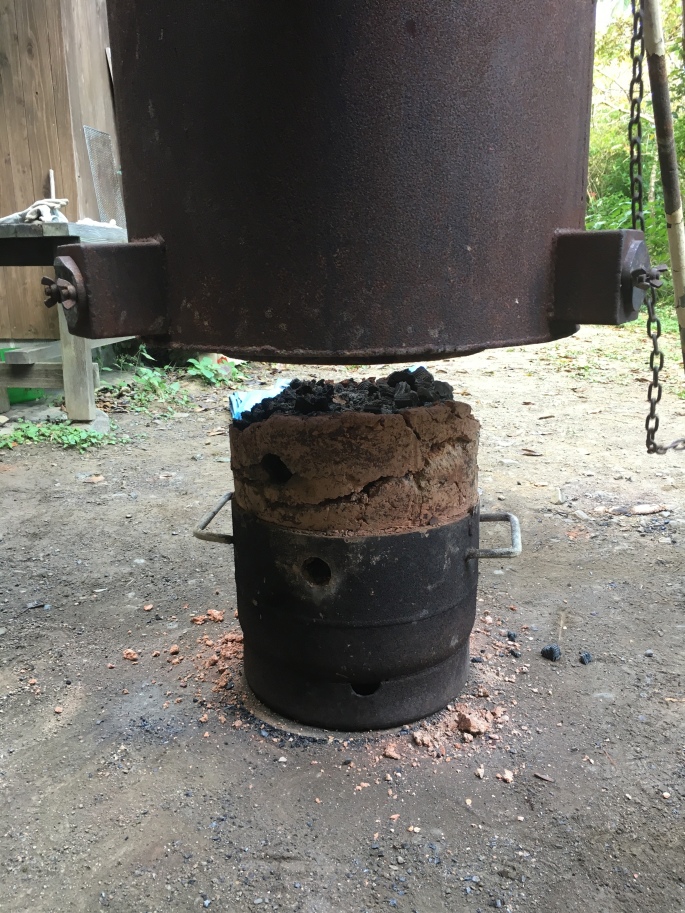
The hoist was used to lift up the lower sections 1 and 2 which were now cool but fused together. With a bit of persuasion they separated and the bloom remained in section 1. Using a hammer and chisel it was carefully removed. There was a lot of slag and glassification which had caused it to stick to the clay walls.


We carefully removed the main bloom, trying to preserve as much of the furnaces clay lining as possible. We bucketed up any material not attached to it.


We spark tested the main piece using a grinder and bright sparks were seen indicating a steel had been made, perfect for knife making.
The next stage is what was really fascinating. All the material that came out of the furnace along with the main bloom was then taken to a motored crushing hammer a loaded in bit by bit to the dish.

It was slowly crushed into around 5 mm cubed pieces. These were then passed through a number of sieves. Any larger pieces were re-crushed, any fine dust material sieved out and the rest tested with a magnet. All the small magnetic iron particles which had been made but not attached to the main bloom were sorted out and collected by this method.



This is what I love about Japan, everything is considered and saved in an efficient manner. We actually found just over 2kg small pieces! The main bloom was broken in to large forgeable chunks and any smaller and medium size pieces would be rejoined through the process of oroshigane. In total there was 8.2kg of iron collected.


The process of oroshigane is used to stick together all the small pieces which are unusable and un forgeable as tiny fragments. A much smaller secondary furnace is used to do this which is clay lined and has one air pipe in.

A carbon charcoal bed was made in the lower section and the two pieces stacked on top of each other. A fire was lit inside the furnace and the air turned on. As it was much smaller and already dry not so much pre heating was needed and charcoal was used strait away. The carbon bed was dampened and compressed after the fire had been burning for a bit and then built up again. We wanted a solid carbon bed which came up just above the seam line between the two furnace sections.

After about 30 minutes of pre heating 200g of small iron particles and a scoop of charcoal were added every 2 minutes till 2.4 kg in total was used. The pieces were added to the top of the furnace in the centre but slightly towards the air pipe, which is the hottest point. They were small at first, larger in the middle and small at the end again. You could see sparks like when Fire welding indicating they were fusing and the internal colour of the fire was bright yellow/ white.

The two sections of the furnace were then split and amazingly all the small pieces had formed a bloom! This was lightly compressed with a sledge hammer on the anvil. The whole process repeated again for another 2.4 kg of small particles. What an incredible process to save tiny pieces and make them useable!


Fascinating. Did you happen to record which charcoal was being used?
Have you read up on Lee Sauder and Skip Williams paper on the Aristotle Furnace by any chance?
LikeLike
Hey Jake. Thanks for the kind messages. It was pine charcoal and I have all the measurements to rebuild both furnaces!! It will be my new project but I’m adapting the first one to have various cooking contraptions added to use the residual heat. I’m meant to be forging togas and lcompressing the bloom but I’ve really hurt my back and am worried I mite have done something serious to come home. So typical. Love Katie x
LikeLike